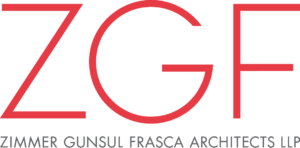February 22, 2024
Proposed ARC projects for 2024-2025
ARC member firms have submitted the following project proposals for academic year 2024-2025. The ARC program will be matching students who have been nominated for an ARC Fellowship in Spring 2024. Questions can be directed to ARC Program Manager Teri Thomson Randall, terir@uw.edu.
![]() An Inclusive History of the Joel M. Pritchard Building on the Washington State Capitol Campus
An Inclusive History of the Joel M. Pritchard Building on the Washington State Capitol Campus
Enhance the holistic understanding of the historic significance of the Joel M. Pritchard building by supplementing the history of the site with more information on pre-white settlement inhabitants. The task would involve taking a deeper look into available records to build a more site-specific picture of indigenous tribes around the capitol campus area, specifically at the location of the Pritchard building and tying them to the time period of the campus development. The deliverable would be a graphic and narrative report for internal audiences, with the opportunity to share information externally to inform public art development or other historical acknowledgements.
 Aging with Dignity in the Urban Realm
Aging with Dignity in the Urban Realm
The number of Americans ages 65 and older is projected to increase from 58 million in 2022 to 82 million by 2050 (a 47% increase).1 Given this rapidly growing demographic: How can we design for aging in community, in a way that does not ‘other’ or isolate those with limited abilities or who require assisted care? How can the building stock necessary to accommodate aging communities be shaped to best accommodate intergenerational interactions, and facilitate a transition to other uses as future need for senior living spaces declines?
[1] U.S. Census Bureau, 2023 National Population Projections Tables: Main Series.
 Social Justice in Building Materials, Part 2 (continuation of 2023-2024 ARC study)
Social Justice in Building Materials, Part 2 (continuation of 2023-2024 ARC study)
Many building products can seem benign in use but actually have a wide variety of social injustices built into their supply chains. In the Year One phase of this project with UW ARC (2023-2024), fundamental supply chain issues were explored and mapped for aluminum and vinyl building products. Year Two would further develop clear processes and tools for building design and construction professionals to understand and assess the greater embodied social impacts of building materials.
Community Engagement and Resiliency Strategic Intelligence Platform
Through design, we strive to create places that enable resilient, diverse, and equitable communities. There are numerous resources available for project teams to try to inform decision-making regarding community equity and resilience, but they can be overwhelming and confusing to navigate which becomes a barrier to making a significant difference in the communities we work in. We aim to develop a strategic intelligence platform that aids project teams in identifying the specific hazards, historical issues, future weather concerns, funding and partnership opportunities, and existing organizations and champions in the community their project is located in. This research will enable project teams to address community improvements early on when they can be more thoughtfully and strategically incorporated into the design process.
